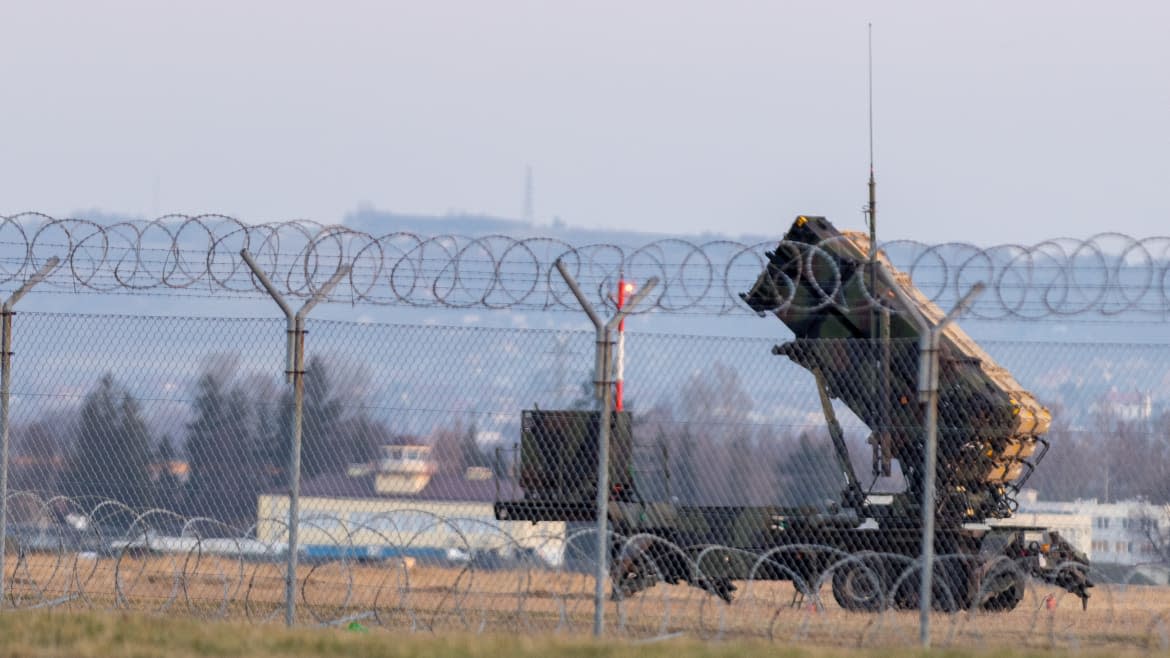Why Russia Is Terrified of This New U.S. Weapons Delivery

- Oops!Something went wrong.Please try again later.
Ukrainian President Volodymyr Zelensky flew to Washington DC to meet U.S. President Joe Biden and address a joint session of Congress Wednesday. The visit is to announce another tranche of aid to his country, but overwhelming focus from American and Russian commentators alike is the announcement that the U.S. will supply PATRIOT air defense missiles to Ukraine.
The PATRIOT donation had been rumored for a few weeks, and there is no shortage of speculation about how useful it will be. Reports talking about how it will perform in Ukraine either oversell its capabilities or undersell its value to Ukraine. Proponents argue that the range and proven performance will reduce the effectiveness of Russia’s terror bombing, which has severely degraded the country’s electrical grid and heating in the dead of winter.
The PATRIOT’s detractors argue that the missiles are too expensive (over $1 million per shot), require difficulty and time-consuming training, and would not arrive in sufficient numbers.
The truth is in the middle. The PATRIOT is indeed expensive, but most Russian attacks on Ukraine’s critical infrastructure so far have been with missiles that cost about as much or more than a PATRIOT interceptor. Russia has also launched cheaper, one way attack drones like the Shahed-136 at Kyiv, most recently on Dec. 19, but their vulnerability to most air defense platforms means that PATRIOTs would not necessarily have to intercept them if less expensive systems can engage.
In either case, the air defense math equation is not as simple as the cost of the interceptor versus the cost of the missile or drone being intercepted. Even in the case of cheap drones like the Shahed, the damage of a successful strike on a power plant or substation is well beyond the cost of a PATRIOT interceptor, not to mention the impact to Ukrainian civilians who need power and heating.
Ukraine’s Zelensky Gets Ammo AND a Ride in Surprise Trip to D.C.
Moscow also has some choice words for the PATRIOT. Russian officials are constantly threatening to strike PATRIOTs should they be sent. Nearly a month ago, former Russian President Dimitry Medyedev claimed that PATRIOT batteries in Ukraine would “immediately become a legitimate target of our armed forces.”
For all the bluster, Putin will likely struggle to actually strike a PATRIOT battery. Unlike other U.S.-provided systems, they will be nowhere near the front lines. Poor Russian targeting means that Russia’s focus when bombing Ukraine’s cities so far have been static targets like Power Plants. A PATRIOT battery, which the Ukrainians can move, will be harder for Russia to target. Even if they did manage to hit some part of the battery, it would mostly be a propaganda victory rather than a fatal blow to Ukraine’s air defense.
A single PATRIOT battery (up to 8 individual launchers) is not a silver bullet, but Ukraine is short of air defense. While attacks on Kyiv are mostly intercepted, other Ukrainian cities are much more vulnerable. If a PATRIOT battery frees up other air defense systems to protect places like Odessa or the front line, that is extraordinarily valuable. As more Ukrainians are trained on the system, it also opens the door to providing more as the war progresses.
The PATRIOT has gotten a lot of fanfare, but Europe is quietly providing an equally capable platform. On Dec. 14, Forbes reported that Italy and France have agreed to provision the clunkily-named Sol-Air Moyenne Portée/Terrestre (SAMP/T) missile defense system. The SAMP/T has a comparable range to the PATRIOT, but is faster to set up and requires just 14 crew members per battery, compared to the PATRIOT’s 90.
The Franco-Italian missile system has gotten nowhere near as much press or threats from Russia, likely because Russia is focused on U.S. policy towards Ukraine, and because the PATRIOT is fielded by half a dozen NATO allies. If Ukraine proves that it can operate U.S.-supplied PATRIOTs effectively, non-U.S. PATRIOT operators might consider supplying replacement parts or more interceptors.
Both the PATRIOT and SAMP/T will help alleviate Ukraine’s air defense shortages, but the timelines for their arrival remain unclear. Neither the donated soviet-era air defense systems Ukraine already knew how to operate, nor the simpler air defense systems donated by the U.S. and Europe require the same amount of training to get them up and running. Some systems promised months ago, like the Crotale, have yet to be observed in Ukraine.
Regardless of how quickly these systems arrive, American and European willingness to part with sophisticated systems show commitment supporting Ukraine—and confidence that they can be used to defend against Russian aggression.
Get the Daily Beast's biggest scoops and scandals delivered right to your inbox. Sign up now.
Stay informed and gain unlimited access to the Daily Beast's unmatched reporting. Subscribe now.

